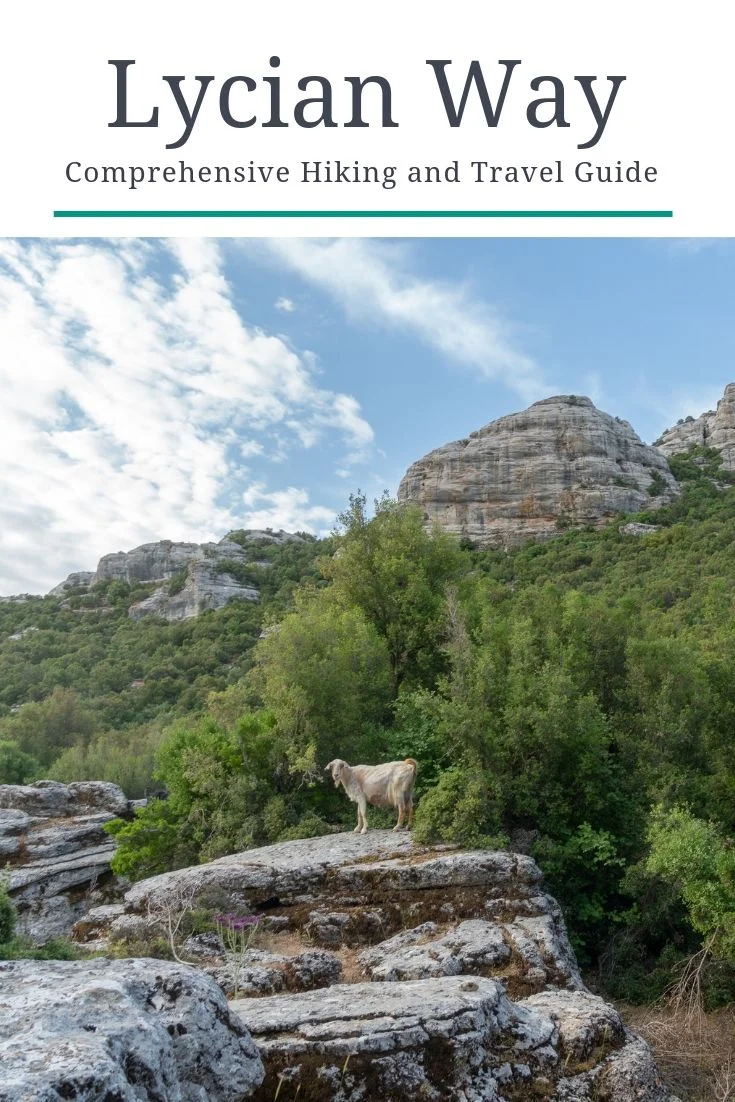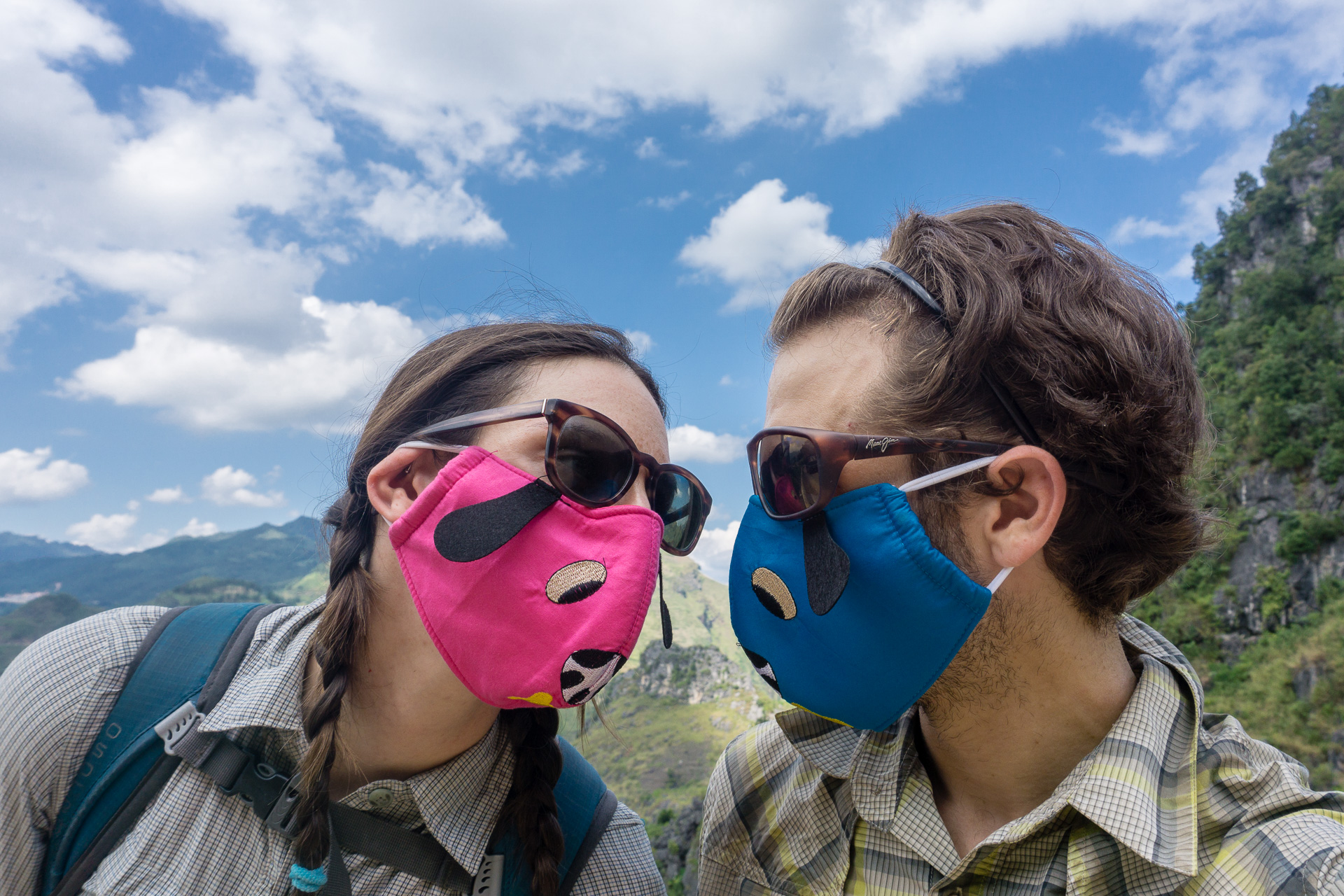A Planning Guide for Hiking The Lycian Way: What to Know Before You Go
/We knew we would hike The Lycian Way. History, ruins, culture, coastline - we were sold. The seed was planted a few months prior while we chatted with an inspiring middle-aged couple in Torres Del Paine, Chile, self-proclaimed “VW Vagabonds,” who’ve been traveling off-and-on for the last 16 years. Their faces lit up when we told them that our next destination, after South America, was Turkey. They glowed while sharing their love for Turkey and then they uttered those fateful words, “The Lycian Way.” Scott and I looked at each other quizzically, unsure how such a momentous hike had managed to allude us. But, as our eyes met in silent agreement, we knew that this hike had officially made our itinerary. Somehow we would make it work with our travel plans.
Fast forward to June: we were ready and it was hot in Lycia. Infernally hot. We forewent our sleeping bags in favor of lightweight sleep sheets and loaded up on sunscreen. Armed with a weighty three liters of water each (completely negating the fact that we’d lightened our packs by leaving unnecessary travel gear at a hotel, oh the irony), we headed out on the trail. Coated in a constant and unrelenting layer of sweat, sunscreen, bug spray, and damp clothing, we took-on The Lycian Way. We altered our initial ambitious route due to the hot weather and the availability of food and water. What remained constant, however, was the warmth of the Turkish people who took care of us, fed us, and helped us along the way. What they say about Turkish hospitality is true - there’s no comparison. The cultural aspect of the Lycian Way is what we’ll remember long after the mosquito bites and sore muscles fade away.
Overlooking the Mediterranean Sea while hiking the Lycian Way
Following the Lycian Way toward ocean views
WHAT IS THE LYCIAN WAY?
We had dozens of questions before starting our trek like, where does the Lycian Way even start? How long is the Lycian Way and how many days does it take to complete? Do we have to hike all of it?
Having hiked the Lycian Way we’ve put together some information to help. The Lycian Way is a 540km trail that spans Turkey’s southwestern coastline from Ölüdeniz (near Fethiye) to Geyikbayırı (near Antalya). It’s referred to as a “cultural route” connecting ancient Lycian ruins, rural farming settlements, and holiday beach towns via mule trails, nomadic footpaths, and ancient Roman roads. Followed in its entirety, the hike takes approximately 29 days to complete and passes through 25 historical sites. The trail crosses a region of Turkey historically called Lycia. It was home to the Lycians, a sea-faring people. Mysterious and autonomous, the Lycian’s valued freedom and practiced democracy in a unified Lycian League. In later centuries they became part of the Roman Empire.
The Lycian Way has been named one of the top long-distance hikes in the world. It offers an interesting contrast between nature, solitude, culture, and tourism. Some stretches are far from another soul where you literally stumble upon abandoned Lycian ruins and into remote farming villages where it feels like stepping back in time. Other sections take you through established tourist towns where admission to ruins requires an entry ticket.
It’s not possible to mention the Lycian Way without mentioning its visionary, Kate Clow, a British woman and budding historian. Driven by a desire to preserve Turkey’s history she researched and pioneered the Lycian Way. In the 1990’s, assisted by volunteers, she way-marked the entire trail. She is also the author of the most comprehensive Lycian Way guide book.
Lycian rock tombs on the trail
The region of ancient Lycia
The Lycian Way: route image created with MAPS.ME
PLANNING FOR THE HIKE:
When is the best time to hike the Lycian Way?
Autumn and spring - September to November and February to May. Avoid the summer months if you can!
Do I need to hike the entire Lycian Way?
Wondering how long to hike the Lycian Way? It is not necessary to hike the entire trail. You can hike shorter sections of the trail for a few days or weeks. From nearby towns it is possible to do day hikes. Using local minibuses (dolmus) and hitchhiking we skipped some sections of the trail and rejoined at later points. Turkish people are notoriously friendly and hitchhiking is not uncommon for locals or backpackers, but remember it’s never a guarantee that you’ll get picked up.
What are the lodging options on the Lycian Way and where can I camp?
In Turkey dispersed camping is allowed anywhere on land that isn’t private. You do not need to stay at a designated campsite. You can ‘wild’ camp virtually anywhere along the route, terrain permitting. Larger tourist towns along the trail have camp grounds in addition to hotels, hostels, and airbnbs. Some small villages on the trail have a guesthouse or two, called pensions. Not every section of the trail passes through a town or has accommodation. If you do not plan to camp, consult your hiking resources in advance to locate a place to stay.
Camping on the Lycian Way
Where can I find food and water on the Lycian Way?
We thought food would be easier to find on the trail, but some villages we walked through felt like ghost towns (we aren’t sure if this was due to hiking during off season, because it was Ramadan, or for another reason) and others did not have a market. In the larger towns on the trail there are many restaurant and market options. Make sure to buy food for snacks/meals from these places to stock up if heading to a more remote trail section. It is also possible to bring your own cooking gear and fuel.
Water is available on many legs of the trek, but not all. You can purchase water or fill your bottle from community taps in towns and villages. In the remote sections of the trail there are wells (though we didn’t use the wells). It is safe to drink from these public water sources. It’s imperative to consult your hiking resources in advance to locate your next water source.
Stopping for a meal along The Lycian Way
A water spout on the Lycian Way
What are the safety concerns on the Lycian Way?
Though we didn’t encounter any, scorpions, snakes, and spiders can be found on the trail. Be mindful if turning over rocks. Remember to shake out your shoes in the morning and zip up bags that are placed on the ground. Make sure to bring plenty water and be prepared as some stretches of the trail DO NOT have access to food or water. It can get very hot on the trail and there are many unshaded sections. Bring sun protection - hats, sunscreen, sunglasses.
Don’t lose the trail. The trail is marked throughout with trail markers. Follow the red and white dashes painted on rocks, trees, or buildings. If the trail curves ahead, it’s indicated by a mark like this (>). This symbol (>) is not an arrow, but a reflection of the shape of the trail ahead. X’s indicate the wrong way. Signs are located infrequently along the trail as are cairns (small rock towers).
Red and white trail markers on The Lycian Way
Signs on The Lycian Way
Essential Hiking Resources:
For us the phone app MAPS.ME was absolutely essential while hiking. This free application allows you to download offline maps by region. The downloaded map clearly indicates your location, the location of the trail, campsites, water sources, geographical features, distance + estimated time between destinations, restaurants, view points, and hotels. We also used the mobile apps Trekking in Turkey and TrailSmart. Trekking in Turkey is a free application that describes what to expect on each leg of the trail as well as background information about historical sites and towns. TrailSmart is a comprehensive application that provides maps, waypoints, and locations for camping. Additionally, the Lycian Way wikivoyage page provides extensive and detailed itinerary information. It helped us a great bit. If you plan to relay on your phone while hiking remember to bring your charging equipment and a portable battery pack. At pensions (guesthouses) and restaurants along the route you can charge your electronics and in larger towns, connect to internet.
Highlights from the Lycian Way:
Our Lycian Way highlights include: observing life in small villages, interacting with villagers, eating meals prepared by locals, the kindness we experienced from locals, and the unbelievably scenic and secluded camping spots on the trail.
One of the many beautiful and tranquil places we set up camp along the Lycian Way
Negatives from the Lycian Way:
Our no so enjoyable moments from the hike include: not passing a market to buy food for longer periods of time than expected, the oppressive heat in June, frequent exposed/unshaded sections of trail, very rocky terrain in some sections, and occasionally losing/having difficulty finding trail markers.
Watch your ankles; a rocky section of trail on the Lycian Way
THE ROUTE:
We spent 13 days hiking the Lycian Way from Bezirgran to Cirali. Click on the bolded links below to read detailed and informational day-by-day accounts of the sections we hiked.
A video compilation of our experience hiking the Lycian Way
Ölüdeniz - Faralya
Faralya - Kabak
Kabak - Alınca
Alınca - Bel
Bel - Gavurağılı
Gavurağılı - Xanthos
Xanthos - Üzümlü
Üzümlü - Patara
Patara - Kalkan
Saribelen - Gökçeören - Hacıoğlan Deresi (almost) - click to read more
Hacıoğlan Deresi - Phellos - Pınarbaşı - Çukurbağ - Kas - click to read more
Kas - Aperlae - click to read more (link coming soon)
Aperlae - Kaleköy - click to read more (link coming soon)
Kaleköy - Demre - click to read more (link coming soon)
Demre - Finike - click to read more (link coming soon)
Finike - Gelidonya Lighthouse - click to read more (link coming soon)
Gelidonya Lighthouse - Adrasan - click to read more (link coming soon)
Adrasan - Çıralı - click to read more (link coming soon)
Çıralı - Chimaera - click to read more (link coming soon)
Çıralı - Kemer (and back to Kalkan for us) - click to read more (link coming soon)
Çıralı - Beycik
Beycik - Yayla Kuzdere
Yayla Kuzdere - Göynük Yayla
Goynuk Yayla - Göynük
Göynük - Elmayani
Elmayani - Çitdibi
Çitdibi - Geyikbayırı
Pin this blog so you can read it later (or during your Lycian Way hike)!




